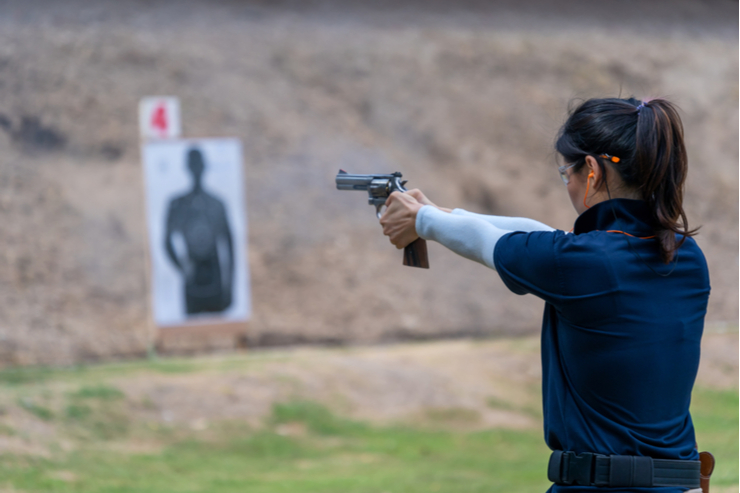
In The Wall Street Journal, the editors remind readers, and most of all, politicians, that “the Second Amendment isn’t an inkblot on the Constitution.” Court cases challenging the rights of Americans to own firearms like the AR-15 are wending their way through the judicial system. The editors encourage the courts to protect Americans’ rights, writing:
The Supreme Court has heard two major Second Amendment cases in three years, but no rest for the weary: This month the Justices are expected to consider whether to take Snope v. Brown, an appeal challenging a Maryland law that bans the sale and possession of “assault weapons.” That includes the AR-15 style, sometimes called America’s most popular rifle.
The Fourth Circuit Appeals Court upheld the law this summer in a 10-5 en banc ruling. Guns such as the AR-15, Judge J. Harvie Wilkinson III writes in that opinion, “fall outside the ambit of protection offered by the Second Amendment because, in essence, they are military-style weapons designed for sustained combat operations that are ill-suited and disproportionate to the need for self-defense.” He says Maryland’s law “fits comfortably within our nation’s tradition of firearms regulation,” as a state regulation of “excessively dangerous weapons.”
This case includes much to unpack, but begin with some facts. The AR-15 was developed in the 1950s, and it’s similar to the military’s M-16, except the civilian version is only semiautomatic, meaning it fires one shot per trigger pull. After the patents on the design expired, copycats multiplied.
These rifles are widespread. The Washington Post suggested last year, citing survey data, that about 1 in 20 Americans owns one. The AR-15 style also was used by mass shooters in Sandy Hook, Las Vegas and Parkland, Fla., as well as Donald Trump’s attempted assassin in Butler, Pa.
The Supreme Court’s decisions on the Second Amendment, including Heller (2008) and Bruen (2022), speak of constitutional protection for weapons that are “in common use” for “lawful purposes.” In a 2021 survey of 16,708 gun owners in the U.S., nearly a third said they’d had an AR-15 style rifle at some point. Asked why, 66% said recreational target shooting, 62% home defense, and 51% hunting.
Judge Wilkinson is a distinguished conservative jurist who was once considered for the Supreme Court. He has argued in the past, though, that the Heller ruling was the antithesis of judicial restraint, akin to Roe v. Wade. In a 2009 law-review article, he called the Second Amendment “ambiguous” and suggested there would be no end of cases after Heller: “As courts get drawn farther into the gun control thicket, they will be forced, as they were by Roe, to decide contentious questions without clear constitutional guidance.”
In the Maryland opinion, Judge Wilkinson second-guesses people who say they keep or bear an AR-15-style rifle for self-defense. “Compared to a handgun, the AR-15 is heavier, longer, harder to maneuver in tight quarters, less readily accessible in an emergency, and more difficult to operate with one hand,” he writes. The rifle is powerful enough, he argues, that firing it at an assailant “in close quarters will often put the safety of cohabitants and neighbors in jeopardy.”
But as the Fourth Circuit dissent responds, there are always tradeoffs, and a point in favor of rifles is that they’re easier than handguns to fire accurately. “The majority seems to think that Heller created a one-size-fits-all list of factors for determining whether a gun is proportional and appropriate for self-defense,” writes Judge Julius Richardson.
Not so. In his view, these guns “are indisputably in common use,” not the kind of “dangerous and unusual” weapons that fall outside the Second Amendment.
The capabilities of the AR-15 style, compared with other available rifles, can be exaggerated, as lawyers David Kopel and Gregory Wallace wrote last year. “The ethos of hunting is to take an animal with a single fatal shot. In the views of some state game commissions, the usual AR calibers of .223 and 5.56mm are too weak,” they said. “Common hunting caliber bullets (.270, .308, .30-06) strike with around twice the energy of AR bullets.”
***
Sooner or later the Supreme Court might want to clarify if the AR-15 is protected by the Second Amendment, and the Fourth Circuit dispute is an opportunity. Judge Wilkinson argues that the Maryland challengers want a constitutional right to semiautomatic rifles as a category, disregarding “exponential differences” between grandpa’s old .22 and a .50 caliber sniper rifle. What’s more, he adds, they “do not provide a clear threshold for the number of firearms they believe must be possessed to be in common use.” His answer is to defer to elected lawmakers.But the Second Amendment isn’t an inkblot on the Constitution. It means something. Can that possibly not include a right to own the gun that claims to be America’s bestselling rifle?
Action Line: Get your gun and your training now. Click here to subscribe to my free monthly Survive & Thrive letter.



